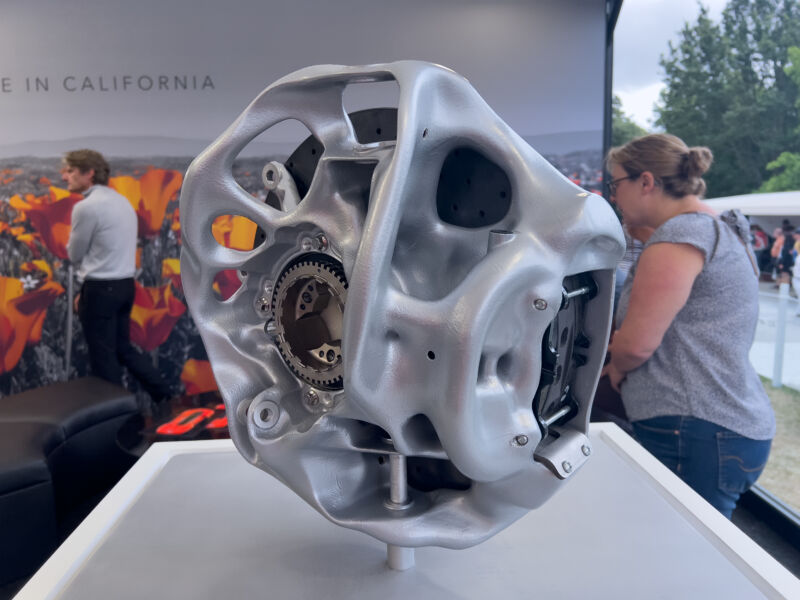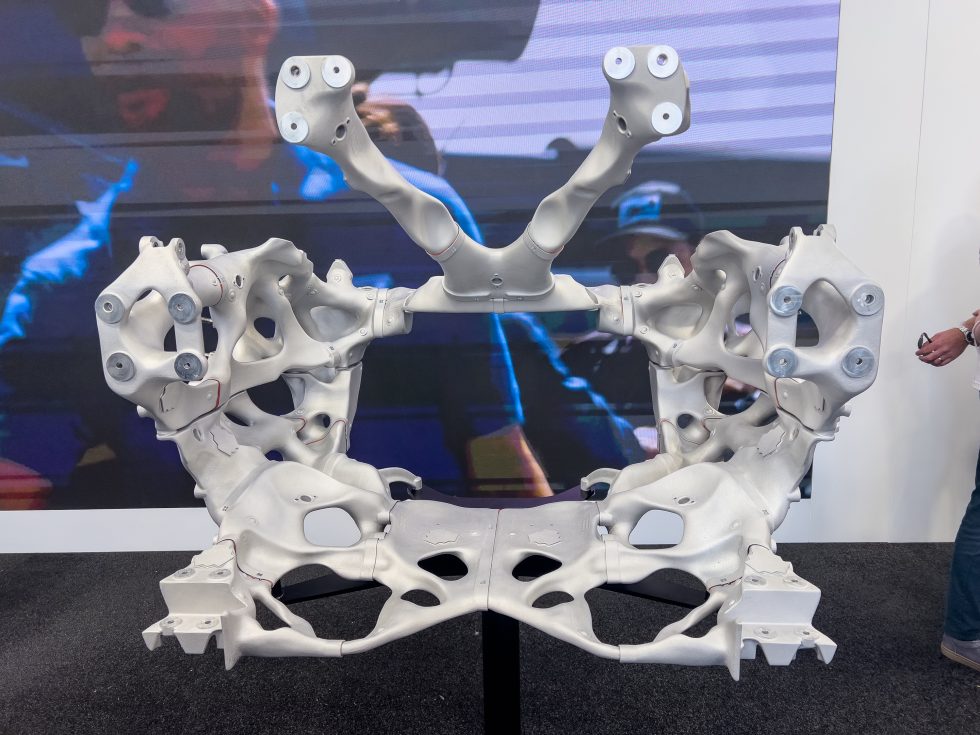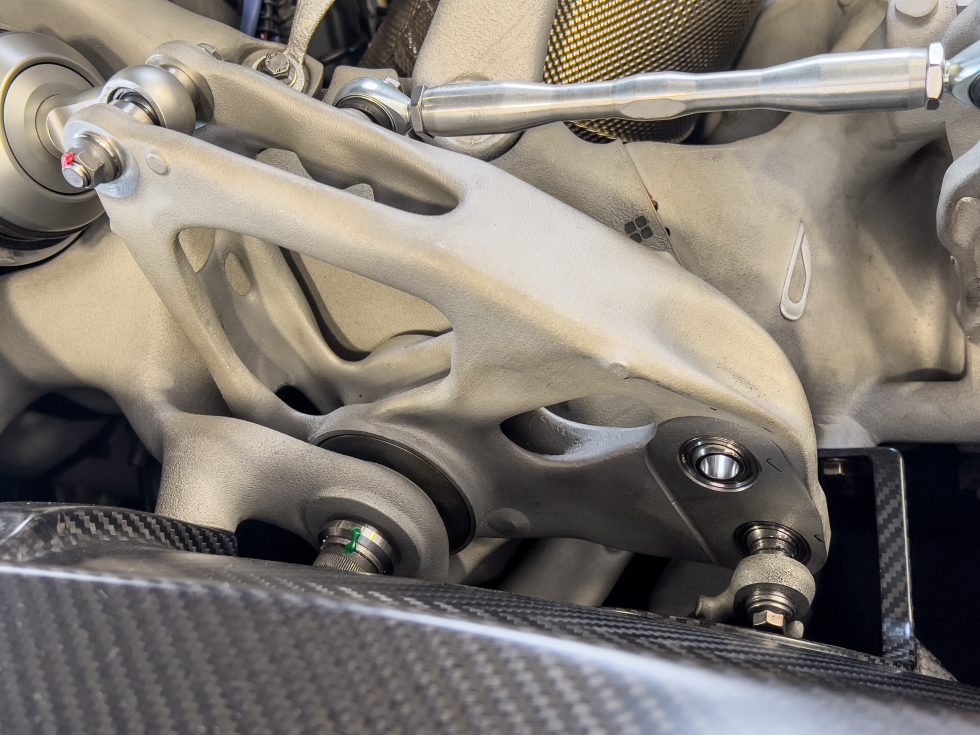
Jonathan Gitlin
3D printing, or additive manufacturing as it is commonly called, is more of a tool to quickly prototype in the automotive industry than to manufacture actual parts for actual cars. Well, mostly. Divergent 3D is an interesting company in this field. It has been providing 3D-printed subframes and other parts for low-volume vehicles for many car manufacturers, including Aston Martin, Mercedes-AMG, as well as several others.
Czinger is a startup that was born from Divergent. It uses Divergent’s technology to build the fastest production car in the world. Kevin Czinger, the company’s founder, was at this year’s Goodwood Festival of Speed where we learned that Divergent had diversified its customer base, and now is getting into aviation. They are 3D printing wings to be used by drone maker General Atomics.

Jonathan Gitlin
We took a look at the Czinger 21C at last year’s Monterey Car Week—to quickly recap, it’s a tandem-seating hybrid supercar with 1,250 hp (932 kW) and a vast amount of aerodynamic downforce that has allowed it to break production car track records at Laguna Seca and the Circuit of the Americas.
Czinger’s decision to create a car company in order to demonstrate Divergent’s print tech was a logical one. “You can’t tell what the tools will be unless you have a product to create that is based on performance, cost-productivity and the materials required,” Czinger said to Ars.
“Because, for example, to really print—not to do what people are doing today in terms of prototyping, but to do what we’re doing for the first time on the planet, which is industrial-rate manufacturing—you have to design a printer that is tuned to your material qualities, which in turn are tuned to your specification and requirements of functionality for the product, all of that needs to be designed together,” Czinger explained.

Jonathan Gitlin
The 21C benefits greatly from the use of 3D printing—parts consolidation has resulted in significant weight savings compared to more conventional construction techniques. The parts are more organic looking than mechanical bits found in most cars. For example, a brake node that combines a caliper with a suspension upright has 40% less mass.
“Going back first principles, I’m saying, what’s really going on is very similar to evolution. Nature is a system of energy, right? Form follows function if there is a process of competing for material and energy. Czinger explained that the reason why the flora, fauna and other plants in your garden look the way they do is because of the long-standing competition between them for energy and material.
“This is using, really, the big technology innovation of the last 75 years, which is computing power—using computing power to mirror that process of optimization of requirements, performance, to minimize the use of material and energy. It looks organic, because it is mirroring the organic processes.

Jonathan Gitlin
Czinger is set to begin delivering the first 21Cs during the fourth quarter of 2018. “It’s going be a fully crash-certified car, with no exemptions to North American certification.” Czinger said that the vehicle will be emission-compliant in California by 2028.
Not just for car enthusiasts
It was interesting to hear that Divergent expanded its customer base by printing parts for the Aerospace industry. Divergent and General Atomics partnered in February to produce uncrewed, remotely-piloted aircraft.
“They came over to us about a month ago, and told us that they had spent three long years designing these new drones. It has a 2-meter long fuselage. We’re using laid-up carbon fibre because we want to achieve mass, but it’s taking us 12 days to build and lay up one of these.
He told me that “within three months, using our system, on the first structure we built, provided them with flight ready hardware which reduced the number parts by integrating things like fuel tanks in the skin. We reduced the number parts from more than 180 to 4 and we reduced mass by 5 percent, even though we used our aluminum alloy instead of carbon fiber.”
General Atomics now has more than 240 printed parts flying on test aircraft but says it’s aiming for between 30–80 percent of the parts on a small drone to be 3D printed.